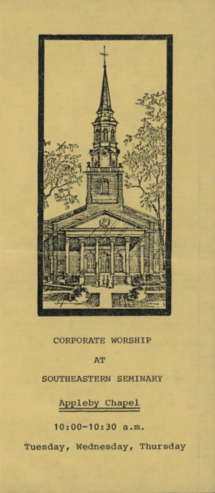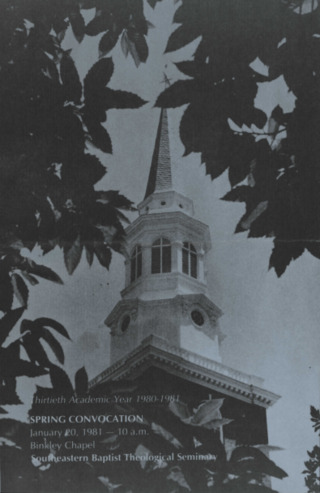Search Constraints
« Previous |
1 - 10 of 11
|
Next »
Search Results
Select an image to start the slideshow

SEBTS Chapel - Robert Lee Richardson, Jr. October 11, 1977
1 of 10

SEBTS Chapel - Robert Lee Richardson, Jr. February 19, 1975
2 of 10

SEBTS Chapel - Robert Lee Richardson, Jr. October 7, 1975
3 of 10

SEBTS Chapel - Robert Lee Richardson, Jr. September 18, 1973
4 of 10

SEBTS Chapel - Robert Lee Richardson, Jr. September 15, 1976
5 of 10

SEBTS Chapel - Robert Lee Richardson, Jr. March 28, 1989
6 of 10

SEBTS Chapel - Robert Lee Richardson, Jr. September 14, 1993
7 of 10

SEBTS Chapel - Robert Lee Richardson, Jr. August 7, 1980
8 of 10

SEBTS Convocation - Robert Lee Richardson, Jr. January 20, 1981
9 of 10

SEBTS Chapel - Robert Lee Richardson, Jr. November 29, 1984
10 of 10








